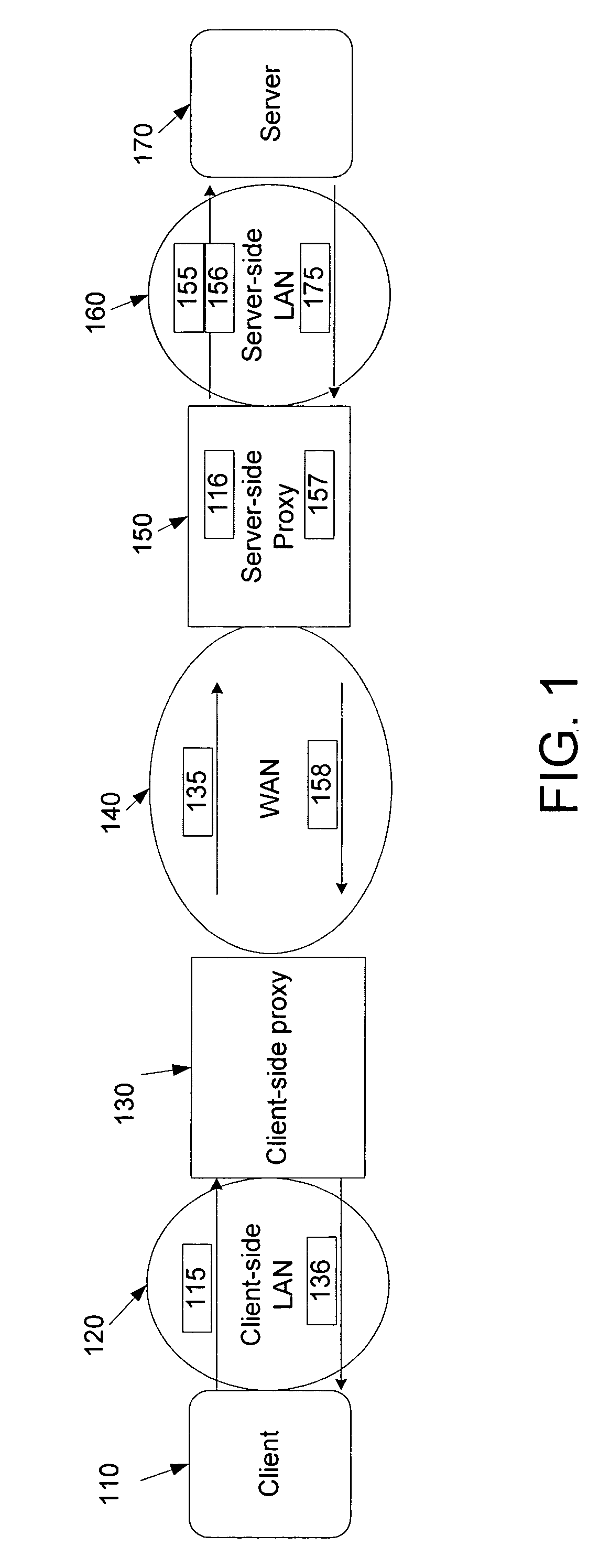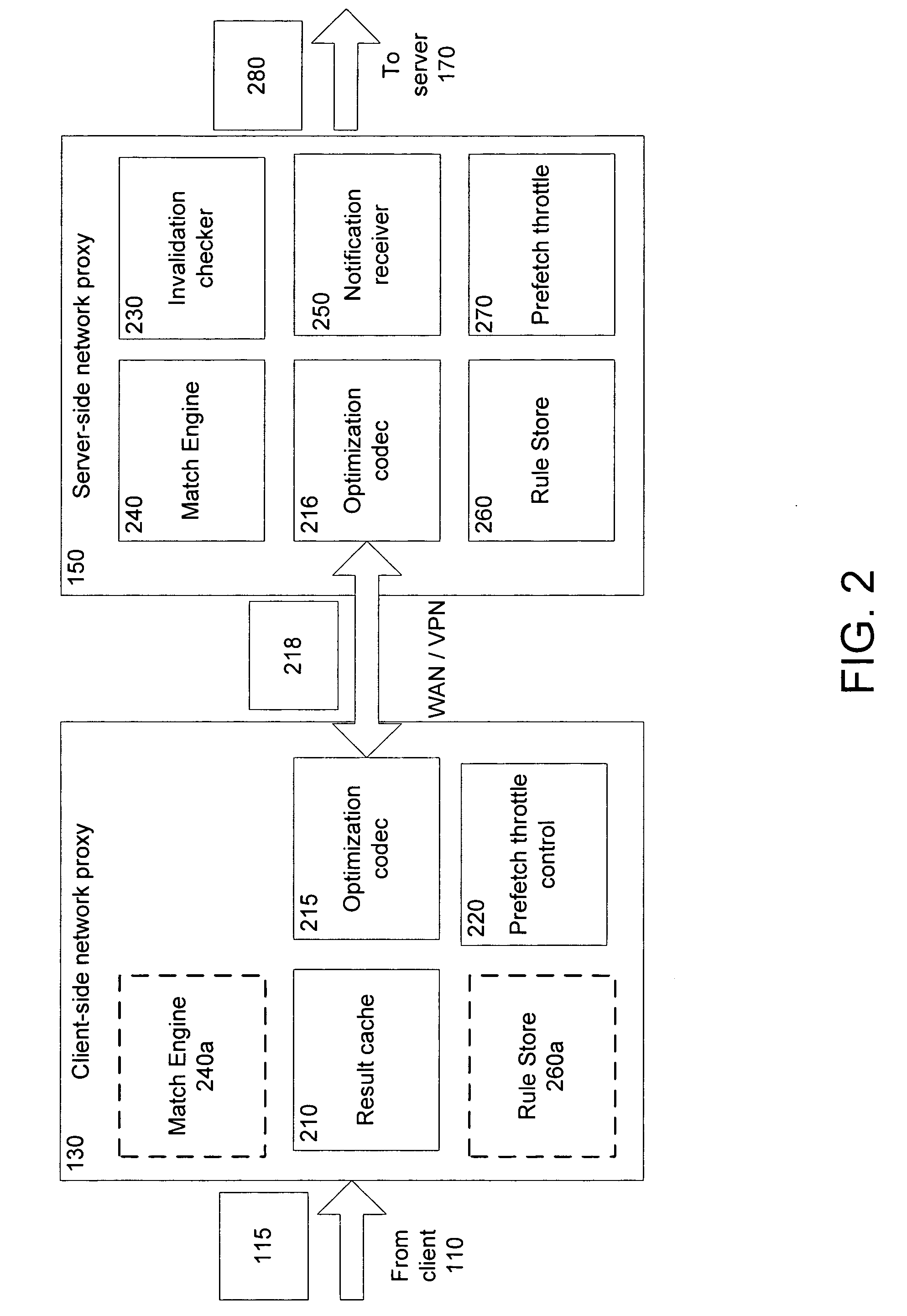Rules-based transaction prefetching using connection end-point proxies
a transaction prefetching and rule-based technology, applied in the direction of instruments, digital computers, computing, etc., can solve the problems of side proxy being forced to return an error, unrecoverable transaction failure, etc., and achieve the effect of reducing server latency and improving client-server transaction speed
- Summary
- Abstract
- Description
- Claims
- Application Information
AI Technical Summary
Benefits of technology
Problems solved by technology
Method used
Image
Examples
Embodiment Construction
[0023]FIG. 1 shows a system 100 for accelerated transactions between client 110 and server 170 according to an embodiment of the invention. In the figure, client 110 and client-side network proxy 130 are both attached to a client-side network 120, typically a local-area network or LAN. Likewise, server 170 and server-side network proxy 150 are both attached to a server-side network 160. Client-side network 120 and server-side network 160 are both connected via WAN 140, possibly via additional routing, switching, or bridging devices and links not shown in FIG. 1. WAN 140 may consist of a variety of networks or internets capable of carrying data messages, including virtual private networking protocols.
[0024] Request 115 from client 110 is sent via client-side network proxy 130, which may answer it with matching cached pre-fetched response 136. If client-side network proxy 130 has no matching cached pre-fetched response, client-side network proxy 110 optimizes or transforms request 11...
PUM
 Login to View More
Login to View More Abstract
Description
Claims
Application Information
 Login to View More
Login to View More - R&D
- Intellectual Property
- Life Sciences
- Materials
- Tech Scout
- Unparalleled Data Quality
- Higher Quality Content
- 60% Fewer Hallucinations
Browse by: Latest US Patents, China's latest patents, Technical Efficacy Thesaurus, Application Domain, Technology Topic, Popular Technical Reports.
© 2025 PatSnap. All rights reserved.Legal|Privacy policy|Modern Slavery Act Transparency Statement|Sitemap|About US| Contact US: help@patsnap.com



